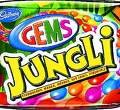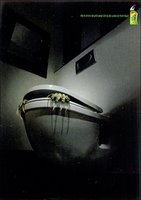Company: Aravind Laboratories
Brand Count : 126
Eyetex is one of India's oldest Kajal. Kajal is the traditional form of eyeliners. It is a Collyrium manufactured traditionally using natural ingredients. Eyetex was started in 19
 38 by Mr Srivasudevan and in 1958, the company was taken over by Mr. AV Srinivasan.
38 by Mr Srivasudevan and in 1958, the company was taken over by Mr. AV Srinivasan.Eyetex brand is one of the largest selling Kanmaye or Kajal in India. The brand is a small player in the Rs 2.2 Billion Indian cosmetic industry. The brand is facing competition from established players like Lakme , Revlon and other international brands and is facing with the problem of the product relevance in the changing Indian psychographics.
The tradition of applying Kajal to the eyes dates back to centuries .Even mythology have references of this product. Traditionally grandmothers used to apply kajal to the infants to prevent eye ailments. Ladies used to apply kajal using the fingers and the Kajal used to give a smokey appearance to the eyes.
Eyetex have been considered as a trusted brand in this segment. The brand although not much advertised, had immense positive word of mouth publicity and the through generations this brand has been passed on.
The brand is now facing the threat from the changing lifestyle of its TG. I am not sure whether the younger generation uses Kajals these days. The place of Kajal has been taken over by the modern Eyeliners. With international brands having the full range of these products that too in different colors and features, the survival of the traditional Kajal is at stake.
Eyetex is positioned as a trusted brand that is prepared from natural oils . With little or no promotions, the brand has a huge recall among the Indian ladies but with the new generations, Eyetex is not much popular.
Eyetex too has tried to change with times. From the traditional round shaped pack, it had metamorphosed to user friendly stick and eyeliners also. But the brand did not change with time. Eyetex is still banking on the trust and the equity of its customers who are fast becoming old. When there is a Revelon or Lakme eyeliner will the new generation pick Eyetex?
 irrelevant for the modern consumer.
irrelevant for the modern consumer.







